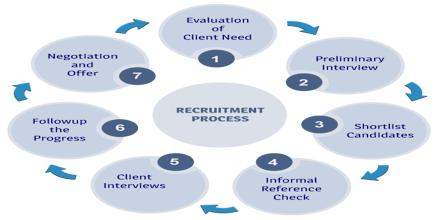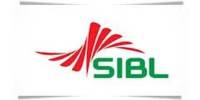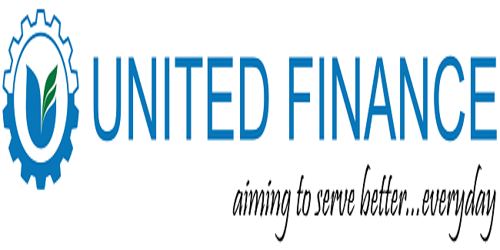Recruitment & Selection Process of BRAC International
BRAC (Bangladesh Rural Advancement Committee), one of the leading non- governmental organizations, is not only in Bangladesh but also more than in ten different countries around the world. It has able to achieve this leading position by their tremendous performance around the world. In 1972, after the Independence of Bangladesh, BRAC has started his journey by Sir Fazle Hasan Abed with the motto of reducing poverty. Now it has operation in more than ten different countries like Afghanistan, Pakistan, Philippine, Sri Lanka, Uganda, Tanzania, Serra Leone, South Sudan, Tanzania, Pakistan, Myanmar, USA.
BRAC Priorities
Focus on women – BRAC places special emphasis on the social and financial empowerment of women. The vast majority of its microloans go to women, while a gender justice programs addresses discrimination and exploitation.
Grassroots Empowerment – BRAC’s legal rights, community empowerment and advocacy programs organize the poor at the grassroots level, with ‘barefoot lawyers’ delivering legal services to the doorsteps of the poor.
Health and Education – BRAC provides healthcare and education to millions. Our 97,000 community health workers offer doorstep deliveries of vital medicines and health services to their neighbors. BRAC also runs the world’s largest private, secular education system, with 38,000 schools worldwide.
Empowering farmers – Operating in eight countries, BRAC’s agriculture programs work with the governments to achieve and sustain food security. This is ensured by producing, distributing and marketing quality seeds at fair prices, conducting research to develop better varieties, offering credit support to poor farmers and using environmentally sustainable practices.
Inclusive Financial Services – BRAC attempts to alleviate poverty by providing the services of its community empowerment program and targeting the ultra poor program. BRAC’s cumulative disbursement is of almost 10 billion dollars in microloans annually, augmenting microfinance with additional services like livelihood and financial literacy training. Farmers get access to seasonal loans, high quality seeds and technical assistance. Millions now have the freedom to take control of their lives.
Self-Sustaining Solutions – BRAC’s enterprises and investments generate a financial surplus that is reinvested in various development programs subjected to poverty alleviation.
Objectives of the study:
- To know the Recruitment & Selection activities of BRAC International.
- To recognize the various product and services of BRAC International.
- To gather the practical experience base on the theoretical knowledge.
- To familiar with the corporate environment and culture.
- To evaluate the function of Selection & recruitment system.
- To analyze the strength of BRAC International.
- To understand the activities of a front desk officer.
- To suggest recommendations on the basis of findings
- To learn and acquainted to fulfill the academic purpose
Products / Service Offering
Agriculture Program
BRAC has released three hybrid rice varieties and three vegetable varieties for commercial cultivation. Agronomic experiments are conducted at different agro-ecological zones of Bangladesh to evaluate intensified cropping system in terms of yield and other agronomic traits, and productivity and profitability. Along with the development project for tenant farmers known as Borga Chashi Unnayan Prokolpo (BCUP) and the northern crop diversification project (NCDP), the secondary crop diversification project (SCDP) has been initiated in collaboration with Asian Development Bank and the Bangladesh Bank.
BRAC’s biotechnology laboratory has developed a method for reducing the total cost of in vitro micro propagation of plants such as potatoes, bananas and cassava by using natural light, ambient temperature and humidity regimes. The significant cost reduction is achieved without compromising the quality and quantity of the in vitro plants produced. Their innovation is repeatable, environmentally friendly and socially impartial and will contribute to the efforts in achieving food security by producing cheaper clones of in vitro plants. This will benefit both the urban and rural poor with a minimal capital outlay.
Integrated Development Programme (IDP)
This programme addresses the needs of the most marginalized and deprived communities who are socially and geographically excluded from the mainstream development interventions in specific areas of Bangladesh. IDP reaches its target group with a coordinated version of all BRAC interventions including health, education, microfinance and overall social development. IDP grants the poor living in hard-to-reach areas with access to basic services, creates livelihood opportunities, mobilizes communities for their empowerment and continually improves its services from research findings.
Instead of conducting different community based forums, IDP piloted a unique community solidarity platform called a village development committee (VDC) in 2013. The VDCs are comprised of people from selected communities with various economic backgrounds irrespective of gender, ethnicity or religion to support the development initiatives of BRAC. This has created synergies among the programmes and allowed various community leaders to devote time to the advancement of the poor and ultra poor in the hard-to-reach areas. IDP provides livelihood development, education, health and legal services to indigenous communities to help them mobilize resources and get better access to development programmes. Through National Coalition for Indigenous People (NCIP), IDP also provides advocacy support to the communities. The programme experimented with haor-friendly floating latrines, cage culture for income generation, open water fish culture and modern agricultural technologies. It developed livestock extension workers and innovative service deliveries such as boat schools and boat clinics to improve school attendance and access to health services. IDP also explored the use of matrix management systems for integrated development and created a development model for hard-to-reach areas.
Microfinance Programme
BRAC Microfinance has grown to become one of the largest providers of financial services to the poor, providing tools, which millions can use for the betterment of their lives. Through its innovative, client focused and sustainable approach, we continue to illustrate that microfinance can yield substantial results for the world’s poor. BRAC’s microfinance programme is a critical component of our holistic approach to support livelihoods. The microfinance programme brings collateral-free credit and savings services to the poor, primarily through village organizations (VO) made up of 20 to 30 women from a local community. These VOs serve as a platform for women to gather and discuss issues concerning their daily lives. Their holistic, credit plus approach also ensures that our borrowers are supported, can exchange information and learn about health, social and legal issues.
Under their Microfinance programme they mainly offer two packages, Dabi and Progoti. Dabi loan package, exclusively for women who are part of VOs, is provided for small enterprise ventures such as rearing poultry and livestock, growing vegetables and making handicrafts.
Loans range from USD 100 to 1,000, with an average loan size of USD 275. To reach micro and small entrepreneurs, whose shops, agricultural businesses or manufacturing activities do not qualify for credit from commercial banks; are considered under Progoti loan package which is given to both men and women. The loans range from USD 1,000 to 10,000, with an average loan size of USD 2,200. They also provide loans for migrants to finance their outgoing costs and the immediate needs of their household after their departure. Loans range from USD 600 to 4,000, with an average loan size of USD 2,300.
In 2013, BRAC’s microfinance programme launched a pilot project on financial education. This project aims to empower microfinance clients by giving them a greater understanding of financial management. Over the next year, the programme will roll out an expanded curriculum, which includes classroom as well as community-based components. The programme has also focused on improving customer service and ensuring that it adheres to client protection standards. The programme expanded on its earlier pilot enabling clients to make loan installments via mobile money, to offer this facility for savings deposits. In 2014, the programme plans to investigate other ways that mobile money can be used to increase client convenience and financial inclusion. One of the major causes of loan defaults is health emergencies within a family. These incidents can be costly and magnify household vulnerability. To help clients cope with these events, the programme is piloting a health loan. Existing clients can quickly access loans for are available for medical services like consultation, diagnosis, surgery, and hospitalization, while patients can decide on their service provider.
Targeting Ultra Poor (TUP) Programme
It focuses on improving the socioeconomic situation of those at the base of the economic pyramid. Living in extreme poverty, this group struggles to meet the minimal dietary requirements and faces difficulty to reach mainstream anti-poverty programmes like microfinance. To help this population at least get on the bottom rung of the economic ladder, our process includes a deliberate sequencing of interventions including asset grants, skills development and personalized healthcare support. According to the latest impact assessment study, about 95 per cent of those in the programme ‘graduate’ from extreme poverty – and have stayed out six years after the programme ends. Most go on to take advantage of more mainstream opportunities like microfinance. The programme is now being adapted by other organizations in different countries around the world.
Health Nutrition and Population Programme
This programme aims to improve reproductive, maternal, neonatal, and child health and nutritional status, reduce vulnerability to communicable diseases, combat non-communicable diseases and enhance the quality of life. By combining preventive, primitive, curative and rehabilitative health services, we serve the disadvantaged, socially excluded and hard-to-reach populations. Our integrated service delivery model utilizes frontline community health workers, creating an effective bridge between underserved communities and formal healthcare systems including BRAC-run health facilities, for improving access, coverage and quality of health services in communities across the country. BRAC’s special diagnosis support helped identifying non-infectious (smear negative and extra pulmonary) TB cases. BRAC’s frontline community health workers maintain regular communication with pregnant women throughout their pregnancy and counsel families to go to skilled providers during delivery. This raised skilled
birth attendance in BRAC-operating areas. They provide training to those health workers to develop their skills in providing safe delivery at home.
Water, Sanitation and Hygiene (WASH) Programme
It provides sustainable and integrated services in rural and isolated areas, breaking the cycle of contamination caused by unsanitary latrines, unclean water and unsafe hygiene practices. We ensure sustainability of these interventions by encouraging community ownership, developing linkages with local government, and encouraging local entrepreneurs to supply low-cost hardware. Installation of water supply systems and sanitation facilities are not enough to improve people’s health – good hygiene practices are essential to serve that purpose. WASH adopted a number of practical approaches to promote hygiene messages that are based on socioeconomic and hydro geological conditions, culture and existing practices.
BRAC Education Programme (BEP)
BEP has become the largest secular and private education system in the world, reaching seven countries. BRAC primary schools are designed to give a second chance at learning to disadvantaged children who have been left out of the formal education system due to extreme poverty, violence, displacement or discrimination. Their non-formal primary schools complement the mainstream school system with innovative teaching methods and materials. At the secondary level, they provide need-based training, student mentoring initiatives, and elearning materials to improve mainstream education. They prioritize adolescents and the youth, offering life skills and livelihood development training, as well as savings and financial services. Mobile libraries from their multi-purpose community learning centers promote reading. BEP enhances the quality of education by training teachers, providing ICT enabled learning, increasing student participation in co-curricular activities, facilitating sports for development, creating volunteering opportunities for youths, offering financial literacy, livelihood and skills training and providing financial support to talented students.
Migration Programme
BRAC initiated a migration project in 2006, to work with potential and returnee workers in 17 migration-prone districts at both service and advocacy level. In Bangladesh, migration has been declared as a thrust sector and is being recognized globally as part of the post-2015 development agenda. However, migrants continue to fall victim to exploitation due to lack of access to information, relevant skills, migration-related services and policy support. So the main motto of this programme is to provide information on safe migration processes, relevant laws and rights, legal support, skills training and social arbitration to recover money from middlemen through community migration forums and volunteers. In 2013, the migration programme started implementing a project to reduce vulnerability for migrant workers and their families by developing and strengthening local information and support systems through community based organizations (CBOs). The pilot is being implemented at 80 sub-districts of 21 districts with the support of Japan Social Development Fund (JSDF) and World Bank. The migration programme became a member of the Coordination of Action Research on AIDS and Mobility (CARAM Asia) in May 2013. The programme also provided support to CARAM Asia’s preparatory work for the Colombo Process, 2014. In collaboration with International Labour Organization, the programme piloted projects that focused on internal migrants who are women. An instrumental information guide was produced to support the migrants on safe internal migration. In December 2013, BRAC was nominated as the convener of migrants’ rights taskforce at the strategic planning meeting of CARAM Asia held in Kuala Lumpur, Malaysia.
General Process of Recruitment and Selection
It is the process of finding and hiring the best-qualified candidate (from within or outside of an organization) for a job opening, in a timely and cost effective manner. The recruitment process includes analyzing the requirements of a job, attracting employees to that job, screening and selecting applicants, hiring, and integrating the new employee to the organization.
In order to increase efficiency in hiring and retention and to ensure consistency and compliance in the recruitment and selection process, it is recommended the following steps be followed.
Step 1: Identify Vacancy and Evaluate Need
Recruitments provide opportunities to departments to align staff skill sets to initiatives and goals, and for departmental and individual growth. Proper planning and evaluation of the need will lead to hiring the right person for the role and team.
Newly Created Position
When it is determined a new position is needed, it is important to:
- Understand and take into consideration strategic goals for the department. Are there any upcoming changes that may impact this role?
- Conduct a quick analysis of Core Competencies. Are there any gaps? What core skills are missing from the department? Evaluate the core skills required now and those which may be needed in the future.
- Conduct a Job Analysis if this position will be new to your department. This will also help to identify gaps.
Replacement
When attrition occurs, replacing the role is typically the logical step to take. Before obtaining approval to advertise the position, consider the following:
- As with a newly created position, it may be helpful to conduct a Job Analysis in order to tailor the position to what is currently required and to ensure proper classification.
- Review the role and decide if there are any changes required as certain tasks and responsibilities performed by the previous person may not or should not be performed by the new person
Carefully evaluate any changes needed for the following:
- Level required performing these tasks; considering the appropriate classification level
- Tasks carried out by the previous employee
- Tasks to be removed or added if any of the work will be transferred within department
- Supervisory or lead responsibility
- Budget responsibility (if any)
- Work hours
- Is there still a requirement for this role at all?
Step 2: Develop Position Description
A position description is the core of a successful recruitment process. It is used to develop interview questions, interview evaluations and reference check questions. A well-written position description:
- Provides a first impression of the campus to the candidate
- Clearly articulates responsibilities and qualifications to attract the best suited candidates
- Provides an opportunity to clearly articulate the value proposition for the role
- Serves as documentation to help prevent, or defend against, discrimination complaints by providing written evidence that employment decisions were based on rational business needs
- Improves retention as turnover is highest with newly hired employees. Employees tend to be dissatisfied when they are performing duties they were not originally hired to perform.
- Optimizes search engine results by ensuring job postings rank high in candidate search results when searching on-line
- Determines FLSA classification and is used to map to the appropriate Payroll Title
- Identifies tasks, work flow and accountability, enabling the department to plan how it will operate and grow
- Assists in establishing performance objectives
- Is used for career planning and training by providing clear distinctions between levels of responsibilities and competencies required
- Is used as a benchmark to assist in ensuring internal and external equity
Identify Duties and Responsibilities
Prior to developing the job description the hiring manager should identify the following:
- General Information
- Position Purpose
- Essential Functions
- Minimum Requirements
- Preferred Qualifications
- General Information
Basic position and pay information will need to be determined to assist with the development of the job description and job classification and for entering into the ATS. This information will be different for each position being recruited:
- Payroll Title
- Pay Grade/Step
- Working Title
- Department Name
- Department Head
- Supervisor Name
- Title Codes and Full-Time Equivalent numbers of employees supervised
- Special Requirements and Conditions:
- Position Purpose
It describes the department’s functions, the unit’s functions, and/or the organizational unit’s functions. The statement should summarize the position’s essential functions and its role in relation to supporting, administering, or managing the activities of the department, unit, or organizational unit.
- Essential Job Functions
Essential job functions describe the duties and responsibilities of a position. A job function is considered essential when the performance of the function is the purpose for the position. Typically, an essential function occupies a significant amount of time of the employee’s time and requires specialized skills to perform. By accurately describing the essential functions of the job, job seekers will have a clear understanding of the role and your expectations for performing them.
When developing essential functions for the position the following should be noted:
- Functions of the job which are critical for the position are arranged by importance and percentage of time spent
- Complexity level and authority for the role should be described to help attract the appropriate level of qualified candidates
- Essential tasks listed should be inter-related to the accomplishment of the essential function.
Here the essential function of event planning is composed of several independent tasks including scheduling and securing the venue; interviewing vendors and executing contracts for service; arranging for food delivery; supervising event workers and ensuring clean up. Therefore, the various tasks required to successfully accomplish the essential function should be identified and described.
- Minimum Requirements
The minimum requirements or “basic qualifications” are those qualifications or criteria which was established in advance and advertised to potential applicants:
- Must be relevant and relate to the duties and responsibilities of the
- “Soft skills” can be required qualifications (e.g., communication/collaboration) , which vary among applicants
- Can be position/department specific (e.g. valid driver’s license)
- Can be assessed by reviewing the resume
Listing too many skills as requirements significantly limits your applicant pool and selection. It is recommended no more than 3-5 “hard” job skills (e.g., Bachelor’s degree, 5 years accounting experience, experience in accessing and retrieving data from financial systems using PC based tools and other “technical job skills”) in addition to the “soft skills” be listed depending upon the level of the position.
- Preferred Qualifications
Preferred qualifications are skills and experience preferred in addition to basic qualifications and can be used to narrow down the pool of applicants. These preferred skills, knowledge, abilities and competencies can describe a more proficient level at which the essential functions can be performed such as:
Applicants who meet some or all preferred qualifications tend to have shorter assimilation time, reach full job competence faster and are able to take on advanced responsibilities sooner.
Step 3: Develop Recruitment Plan
Each position requires a documented Recruitment Plan which is approved by the organizational unit. A carefully structured recruitment plan maps out the strategy for attracting and hiring the best qualified candidate and helps to ensure an applicant pool.
In addition to the position’s placement goals the plan contains advertising channels to be used to achieve those goals. The recruitment plan is typically developed by the hiring manager in conjunction with the Departmental HR Coordinator.
Recruitment plan elements:
- Posting Period
- Placement Goals
- Additional Advertising Resources
- Diversity Agencies
- Resume Banks
Contact your department HR Coordinator for a Sample Recruitment Plan
- Posting Period: It mainly refers to the duration which mainly allotted for the posting of a particular job position. It can be 10 days; 15 days, 1 month or open till recruitment but most of the case there is a standard time period.
- Placement Goals: Placement goals are required for each recruitment which mainly refers why the organization placing the new hires.
- Additional Advertising Resources
A variety of recruiting sources (both internally and externally) should be utilized to attract candidates. Every effort should be made to conduct a thorough search by advertising widely before filling a position.
Print Advertisement
- Local media, national publications (not used as frequently, but may be suitable for certain positions) and other paper advertisements
Social Media
- LinkedIn, Twitter and Facebook are good alternative recruiting sources.
Job Fairs
Before the internet, job fairs were considered a popular method for meeting candidates face to face. Job fairs such as those aimed at diverse candidates or specific to certain industries, are still considered one of the best methods for meeting potential candidates in a single event.
Resume Banks
Resume banks are another good source for identifying qualified candidates. Job seekers post their resume to these which are then searched by prospective employers.
Step 4: Select Search Committee
To ensure applicants selected for interview and final consideration are evaluated by more than one individual to minimize the potential for personal bias, a selection committee is formed. The hiring manager will identify members who will have direct and indirect interaction with the applicant in the course of their job. Each hiring manager should make an effort to appoint a search committee that represents a diverse cross section of the staff.
For positions that are frequently recruited and utilize a search committee, the mix of search committee members should change frequently as well to minimize the risk of “group think” or collective bias.
The Hiring Manager will determine the size (no more than 6) and composition of the committee based on the nature of the position. It is highly recommended the committee members include:
- At least one individual who has a strong understanding of the role and its contribution to the department
- A job specialist (technical or functional)
- An individual who will interact closely with the position and/or serves as a main customer
Search committee members must ensure no conflict of interest in relation to the applicants under consideration and must never be individuals who may have interest in the position
Step 5: Post Position and Implement Recruitment Plan
Once the position description has been completed, the position can then be posted to the company website or other sites where it wants. Every effort should be made to ensure the accuracy of the job description and posting text. It may not be possible to change elements of a position once posted, because it may impact the applicant pool.
Step 6: Review Applicants and Develop Short List
Once the position has been posted, candidates will apply via different media. Candidates will complete an electronic applicant for each position (resume and cover letter are optional). Candidates will be considered “Applicants” or “Expressions of Interest”.
All applicants must be reviewed and considered. Candidates who apply after the initial application period will be considered “expressions of interest” and not viewable by the search committee.
It is recommended that all search committee members review all Applicants to ensure more than one person assesses their qualifications and that individual opinion or biases are avoided. It is permissible to have at least two committee members review all Applicants for certain recruitments in which there are extensive applicant pools to best narrow down the pool.
Alternatively, Human Resources may perform this function. Each committee member may provide comments to each Applicant’s qualifications as they relate to the minimum requirements of the position.
A phone screen may be conducted to obtain information such as availability, salary requirements, special position requirements (e.g. ability to perform shift work), ascertain minimum requirements and other preliminary information to assist the search committee with their review. It is possible to screen out an applicant due to information obtained during this initial screening and therefore phone screens should be properly documented and attended by at least two search committee members or Human Resources.
Step 7: Conduct Interview
The interview is the single most important step in the selection process. It is the opportunity for the employer and prospective employee to learn more about each other and validate information provided by both. By following these interviewing guidelines, you will ensure you have conducted a thorough interview process and have all necessary data to properly evaluate skills and abilities.
Preparing for the Interview
Once the short list (typically 3-5 identified for interview) is approved by the Office of Faculty and Staff Affirmative Action, the interview process can begin. It is important to properly prepare for the interview as this is the opportunity to evaluate the skills and competencies and validate the information the applicant has provided in their application and resume.
Panel Interviews
Prior to the panel interview, committee members should ensure they know which interview questions each will ask.
At the start of the interview, introductions of the Chair and panel members, including names and job titles/roles, are given. Next, the Chair should outline the format of the interview so that the candidate is aware of what is going to happen.
A typical format might be:
- Introductions of each panel member
- A brief description of the role they are being interviewed for
- Description of how the interview panel will conduct the interview (e.g. each alternates questions and all will take notes)
- The candidate gives an overview of their experience
- Each panel member provides their questions at the conclusion of the interview.
- The interviewee is given time at the end to ask questions
- The interviewee is informed of the next step (e.g. will be contacted either by phone or in writing of the outcome)
- Thank the candidate for coming and ensure someone shows the candidate out
Virtual Interviews
To reduce travel costs and time associated with interviewing out of area applicants, virtual interviews can provide an alternative method to in-person interview.
To ensure fairness and equity in the interview process, it is recommended out of area applicants are provided an opportunity to interview in the same manner as local applicants during each stage of the interview process.
Interview Questions
Questions should be relevant to the position and seek information on specific skills and abilities to perform the job such as “describe your experience working with students in an academic environment and/or post-secondary degree-granting institutions”. Interview questions not pertaining to the current requirements of the position are not to be used (e.g. an interview question on supervisory experience if position will not be supervising employees).
After the Interview
Upon completing the interview, committee members will complete one of the following evaluation tools and forward to the Committee Chair along with any interview notes. Candidate evaluations should be sure to include only those comments which are relevant to the requirements of the position.
Testing and other Selection Methods
Tests and other selection methods such as requesting work or writing samples and presentations are additional tools used to assess candidates.
Skills demonstrations, such as requiring applicants to demonstrate how to perform a task specific to the position they are applying to, are considered tests and must be validated.
Writing samples and presentation assessments are not considered tests and can be evaluated using a scoring rubric. Similar to the tool used to evaluate a candidate during an interview, writing and presentation scoring rubrics are used to evaluate the applicant’s writing and/or presentations skills based on certain predetermined criteria. To obtain a writing or presentation
scoring rubric, contact your departmental Human Resources Coordinator or Human Resources.
- Applicants are to be notified, via the posted position purpose, of the requirement for tests or other selection methods (e.g. writing and presentation) used as part of the hiring process.
- Tests, work samples and presentations should only be required of short list candidates
- Because tests and requests for writing samples and presentations must be administered consistently across the hiring process without regard to race, color, national origin, sex, religion, age (40 or older), or disability, their administration procedure must be approved by Human Resources prior to use. Tests and the selection tools mentioned above should not be relied upon as the only screening mechanism. Interviews and reference checks should carry considerable weight in the overall decision process.
Welcoming the Interviewee
Interviewing can be a very stressful experience for some and the more at ease an interviewee is, the better you are able to identify true attributes. The following should be considered:
- Panel interviews, can be an intimidating environment for an interviewee, so remember to break the ice if possible
- When organizing interviews, it is best to assign a person who ensures the interviewees have the proper directions, parking details and who is easily accessible on the date of the interview
- Allow enough time for the interview so the interviewee does not feel rushed. Let the interviewee do most of the talking. Remember the 80/20 rule. The interviewee should be doing 80% of the talking. While it’s important to articulate the needs of your department and the role, this time is to gather as much data to evaluate their experience and ensure a proper fit.
- Be sure to review the interviewee’s resume in advance to assess skills and background. Take notes and ask for clarification on responses if needed.
- Be sure to avoid any inappropriate or illegal interview questions.
Step 8: Select Hire
Final Applicant
Once the interviews have been completed, the committee will meet to discuss the interviewees. Committee members will need to assess the extent to which each one met their selection criteria. The search committee evaluation tool will be helpful in justifying decisions and making them as objective as possible.
Documentation should demonstrate the selection decision. As one of the most critical steps in the process, it is important to keep the following in mind:
- The best candidate for the position was chosen based on qualifications
- The candidate will help to carry out the University and Department’s missions
Reference Checks
The purpose of a reference check is to obtain information about a candidate’s behavior and work performance from prior employers that could be critical to your decision, regardless of their skills, knowledge, and abilities. As past performance is the best predictor of future success, it is recommended references be obtained from current and previous supervisors who can speak to the candidate’s on the job performance. A hiring mistake is costly in time, energy, and money.
Failure to check references can have serious legal consequences. If an employee engages in harmful behavior, which would have been revealed in a reference check, the University can be held legally responsible for “negligent hiring”.
When to Conduct References
Reference checks should be conducted on the finalist(s) prior to making an offer
References in the Overall Decision Process
Information that is obtained through the reference check process should be considered as part of the overall decision making and should carry considerable weight. Additionally if available, obtaining copies of signed past performance reviews is also recommended.The same process (on-line or phone as described below) is to be followed for each recruitment.
Reference Checking Options
- Online Applicant Reference Checking
- Under certain circumstances, additional references may be contacted if additional information is needed (e.g. low ratings on a particular skill or behaviors) by entering additional references
Phone Reference Checks
Departments conducting references by phone should utilize the Applicant Consent Form. Before starting the phone reference check process, be sure to:
- Prepare carefully
- The information the applicant has already provided, including the application, resume, work sample (if applicable) and interview responses
- Identify areas that require elaboration or verification
- Set up a telephone appointment with one or more references provided by the applicant
- Many employers are prohibited from providing information without a release, so if requested, send the signed Reference Checking Release and Disclosure consent form and the job description (optional) in advance of your telephone call.
- Write down your questions before you call, highlighting the information you want verified or expanded upon.
- An environment should be set up that encourages the reference to respond willingly, cooperatively, and honestly.
- Specifically job-related question should be asked and they have to make sure that they are not asking the question related about race, color, national origin, religion, sex, physical or mental disability, medical condition, ancestry, marital status, age, sexual orientation, citizenship, or status as a covered veteran.
Step 9: Finalize Recruitment
Upon completion of the recruitment process the offer to the selected finalist is made. Prior to initiating the offer, it is recommended that one more check of the selection process be completed as follows:
- The duties and responsibilities of the position should be reviewed and ensure they were accurately described and reflected in the job description and interview process
- The selection criteria is used should be reviewed to ensure they were based on the qualifications listed for the position
- Interview questions should be confirmed clearly matched the selection criteria
- It is to be confirmed all applicants were treated uniformly in the recruitment, screening, interviewing and final selection process
Initiating the Offer
- Once a final check of the selection process has been completed and the final applicant has been determined, the Committee Chair or designee will notify the Departmental HR Coordinator of the finalist’s name, salary and start date.
- The Departmental HR Coordinator reviews the requisition in the ATS and ensures all applicants on the requisition have been assigned a decision code
- The Departmental HR Coordinator forwards this information to the Organizational HR Coordinator for review and approval
- Once approved, the Departmental HR Coordinator notifies the Committee Chair or designee of offer approval
- The Committee Chair or designee makes the offer to the finalist
Note: A verbal offer of employment and the finalist’s verbal acceptance creates a contractual relationship – therefore, ensure the offer has been approved prior to verbally offering the position.
Negotiating the Offer
- Whenever possible, it’s recommended your best offer be made the first time as this displays proper market and internal equity practices and demonstrates good faith to the applicant.
- When offering the finalist the position, be sure to discuss the total compensation package (in addition to salary) such as paid time off and retirement benefits. Be excited and enthusiastic about the offer and let them know you are excited about them joining your team.
- Lastly, if possible, discuss the great learning and development opportunities which may be available to them in achieving their professional goals. Most individuals value this just as much, in some cases more, than the base salary being offered.
Countering the Offer
- Despite the best offer, there may be instances where the applicant declines
- Discuss the reasons for the offer being declined with the applicant – and look beneath the surface. Applicants decline offers for various reasons and not always due to the salary being offered.
- If an offer is declined due to salary, the department may make a counter offer provided the amount is within the appropriate guidelines for the role and department
- Counter offers must be reviewed and approved by the Organizational HR Coordinator
Finalizing the Offer
It is important that each recruitment be properly closed, including the notification of those interviewed and not selected, as well as all documentation associated with the recruitment be uploaded to the system.
Finding and Analysis
Analysis of recruitment and selection procedure
After discussing the theoretical recruitment and selection process and the practical implementation of BRAC International we can say that there are some similarities and differences between those recruitment and selection process. It is not possible that all the theoretical knowledge can be practiced directly in any organization. Most of the organization designs their whole process according to the organization value and requirement. Here BRAC International also customizes their recruitment process according to their requirements.
If we try to find out some similarities between the BRAC International recruitment processes with general process then we can say that there are some key areas we can focus which are given bellow:
- In the general process we can see that the first step is identify the vacancy and evaluating the need of that new vacancy and from BRAC International recruitment process we can see that for doing the planning and forecasting of human requirement they also try to follow this step. After getting an estimation of programme head the top management sits with the HR department to do the ultimate forecast of human requirement by verifying the necessity of programme requirement. As they hire the employee for contractual basis so it is very important for doing the planning and forecasting the gap between available human resource and the required human resource as per project needed.
- The second step of general recruitment process is develop position description and if we focus the BRAC International process then we can see that they also try to follow this step when they prepare for the job advertisement they always try to ensure that the job description of respective vacant position is clearly mention in their advertisement. Beside this, they also mention the additional requirement along with academic requirement and preferable experience which ultimately reflect that they are very serious for developing the position description for attracting the right candidate for their vacant position.
- From the recruitment process of BRAC International we can say that they try to develop a recruitment plan for making the process more efficient. For example after the approval of staff requisition form they try to post their job advertisement in their official website within 3 days and after posting the job advertisement they give 15 days to the applicant for applying for that vacant position which reflects that the try to maintain the general process of recruitment plan for making the process more efficient.
Findings of Recruitment and Selection Process
After analyzing the recruitment and selection process of BRAC International we can say that they try to follow a structured process to recruit the candidates for the vacant position. As I got the opportunity o work there as an intern, so during my internship I notice some gaps in there recruitment process which I like to mention in my report:
- To collect the vacant position, they mainly rely on their official recruitment website and beside this they have an access in bdjobs database. When they feel that the CV they received from the recruitment website for the vacant position is not enough then they go for the second option which is bdjobs to hire the potential candidates. Sometimes it is also not enough to get the potential candidate from bdjobs because as they are looking for the candidate outside Bangladesh and they have a huge operation in African country, so people are not interested for those countries. In that case, it is really challenging for the recruitment team to find out the potential employee for that vacant position.
- To publish their advertisement for job vacancy, they mainly rely on their official website and bdjobs which are also not enough always to attract the potential candidate as there vacancy is basically for mid level and top level position where the requirement is very high which ultimately delays there whole recruitment process.
- As an intern sometimes I feel that there is a lacking of supervision for maintaining the interview database. There the interns are mainly responsible for updating the interview status in their database. Sometimes they do not update this database properly after the interviews which ultimately hamper their main motto of maintaining this database.
So these are some areas where I found gap in their recruitment process during my internship which is need to be improved to avoid the obstacles and make the whole process more effective.
Recommendation
After doing the analysis we can say that BRAC International try to practice some standard recruitment process to make the whole process more effective. So providing recommendation for a leading NGO like BRAC is tough job indeed. As a fresher it is quite difficult for me to prepare the recommendation, but according to me there are some areas which are needed to be focus to make the process more effective.
- Firstly BRAC might introduce the resume bank where interested applicants can drop their resume. As I have mentioned earlier that sometimes their sources of collecting CV not enough so this can help them to overcome form this problem. So when they feel that they need more potential CV to hire the most eligible candidate or there is any urgency to fill up the vacancy they can easily access the resume bank.
- Secondly they should give more focus to publish their job advertisement. As I have mention earlier that the sources they use to advertise their job vacancy is not always enough to attract the their targeted applicant , so according to me they should give more focus on that because as they are looking for candidates outside Bangladesh and their vacancy is mostly for mid level or top position, so they should do a research to identify which is the best source to attract the potential candidate according to their vacancy and on the basis of that they should do the job advertisement. Beside this for attracting the internal candidate they can introduce notice board which can easily attract the potential candidate to apply for the vacant position.
- Thirdly they can introduce succession planning for hiring the top position. Now to hire the top position they mainly prefer the head hunters as they are a good source to fill up the vacant position but if they introduce the succession planning then it will encourage the internal candidate to be more dedicated towards their work.
- In addition they should practice the feedback session for the interviewing candidates that what type of candidates they are looking for, what are their lacking and what are the areas they need to be improved to be eligible for this type of position. This is really helpful especially for internal candidate who applied for the vacant position. As they are already involved with the organization, so sometime they might be demoralized if they are not selected which ultimately affect their current performance. So this feedback session helps them to overcome their lacking and to be more dedicated toward their work.
- Lastly they need more supervision to update their interview status database as I have mentioned earlier.
So these are some areas where the recruitment team of BRAC International can give attention to make an effective recruitment process.
Conclusion
To sum up I would like to say, after getting involved in the recruitment process of an organization, I could virtualized many things which were not possible only reading the books. In this report I tried to elaborate both the general guideline of the recruitment and selection process along with the recruitment process of BRAC International. During preparing the report I clearly understand what are the similarities and differences between the theoretical knowledge and practical nowledge.
On the concluded note it can be mentioned that the recruitment process of BRAC International is quite effective and efficient. They try to follow a structured process to make their process cost effective and efficient. Beside this there are some areas which are needed to be change to make the best recruitment practice.
So overall it was a very good experience for me to join as an intern at BRAC International and to be a part of recruitment team.
















